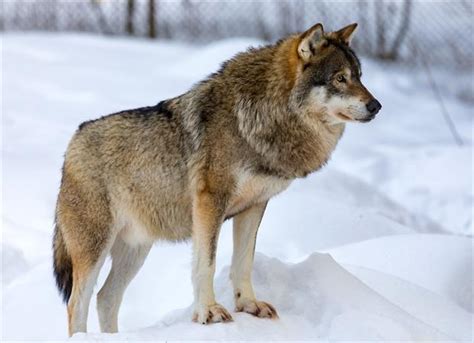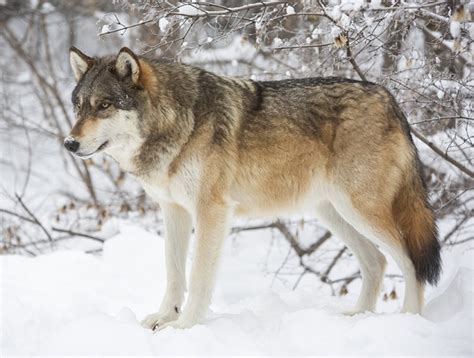Wolves, magnificent and often misunderstood creatures, have long captivated the imagination of wildlife enthusiasts and nature lovers alike. With their striking appearance and complex social structures, these apex predators play a crucial role in maintaining the balance of ecosystems around the world. In this comprehensive guide, we explore the diverse world of wolf species, delving into their unique characteristics, habitats, and the challenges they face in the wild. Whether you’re a seasoned wildlife enthusiast or simply curious about these fascinating animals, this guide will provide valuable insights into the lives of wolves and their significance in both nature and human culture.
Explore this topic thoroughly with ugodj.com
1. Introduction to Wolf Species
Wolves, among the most iconic and revered creatures in the animal kingdom, embody both the untamed beauty and inherent dangers of the wild. As apex predators, they play a crucial role in their ecosystems, influencing prey populations and even the vegetation of their habitats. Across continents, various species and subspecies of wolves have adapted to diverse environments, from icy tundras to dense forests and arid deserts.
Though wolves are found across the globe, many species are facing serious threats from habitat loss, human conflict, and climate change. Understanding the diversity of wolves is crucial for appreciating their vital role in ecosystems and for developing effective conservation strategies. Wolves have also deeply impacted human culture and mythology, often symbolizing strength, loyalty, and cunning. This section presents the different species of wolves, offering a foundation for understanding these fascinating creatures and paving the way for a deeper exploration of their influence on both the natural world and human history.

2. Major Wolf Species and Their Characteristics
Wolves are a diverse group of animals, with several species and subspecies that vary in size, appearance, and behavior. The Gray Wolf (Canis lupus), the most widespread and well-known, is recognized for its adaptability and has numerous subspecies, including the Arctic Wolf, Timber Wolf, and Mexican Wolf. These subspecies differ in size, coat color, and habitat preferences, from the snowy Arctic tundra to the dense forests of North America.
The Red Wolf (Canis rufus), found primarily in the southeastern United States, is smaller and more elusive, with a reddish-brown coat that helps it blend into its environment. Another notable species is the Ethiopian Wolf (Canis simensis), native to the highlands of Ethiopia, known for its slender build and reddish fur.
Each wolf species has evolved unique characteristics that enable it to thrive in its specific environment. Understanding these differences is key to appreciating the diversity within the wolf family and the ecological roles they play across the globe.

3. Habitat and Distribution
Wolves are remarkable for their adaptability, with diverse species thriving in a wide array of environments worldwide. The Gray Wolf, the most prevalent species, is found in habitats as varied as the icy tundras of the Arctic, the dense forests of North America, and the arid deserts of the Middle East. Their adaptability enables them to flourish in diverse conditions, as they are capable of hunting a wide range of prey, from large ungulates like deer and elk to smaller animals like rodents.
The Red Wolf, in contrast, has a far more limited range, historically inhabiting the southeastern United States. Currently, due to habitat loss and human persecution, their numbers have dwindled to small pockets in North Carolina. Efforts are underway to reintroduce and safeguard this species within its natural environment.
The Ethiopian Wolf, a species unique to the Ethiopian highlands, thrives in Afroalpine ecosystems at elevations exceeding 3,000 meters. These wolves exhibit a high degree of specialization, focusing their diet primarily on rodents and other small mammals that populate the grasslands and moorlands of their mountainous habitat.
The survival of each wolf species hinges on its habitat and distribution. Human activities and environmental alterations present substantial threats to their continued presence in these areas.

4. Conservation Efforts and Challenges
Conservation efforts for wolves have been ongoing for decades, with varying degrees of success depending on the species and region. The Gray Wolf, once driven to near extinction in many parts of North America and Europe due to hunting and habitat loss, has seen a resurgence in recent years thanks to protective legislation, reintroduction programs, and public awareness campaigns. However, they still face challenges such as habitat fragmentation, poaching, and conflicts with humans, particularly in areas where livestock is prevalent.
The Red Wolf, critically endangered and with a much smaller population, faces significant obstacles. Despite efforts to reintroduce them into the wild, their numbers remain precariously low due to continued habitat loss and hybridization with coyotes, which threatens their genetic purity.
The Ethiopian Wolf is also critically endangered, with fewer than 500 individuals remaining in the wild. They are threatened by habitat loss, disease (particularly rabies), and conflict with local farmers.
Conservation strategies must be tailored to the specific needs and threats faced by each wolf species, requiring collaboration between governments, conservation organizations, and local communities to ensure their survival.
5. The Role of Wolves in Culture and Mythology
Wolves have played a significant role in human culture and mythology across the globe, often embodying complex and sometimes contradictory characteristics. In many Native American cultures, wolves are revered as symbols of strength, loyalty, and family unity. They are seen as spiritual guides, and their howls are believed to connect the physical and spiritual worlds. The image of the wolf as a powerful and noble creature is a recurring theme in the myths and legends of various indigenous peoples.
In contrast, European folklore has often depicted wolves in a more fearsome light. Stories like “Little Red Riding Hood” and “The Three Little Pigs” portray wolves as cunning and dangerous predators, reinforcing a narrative of fear and mistrust. These tales have contributed to the perception of wolves as threats to human safety and livestock, which fueled centuries of hunting and persecution.
In Norse mythology, the wolf Fenrir is a monstrous creature destined to bring about the end of the world during Ragnarok. This portrayal reflects the fearsome power attributed to wolves in ancient cultures.
Despite these varied representations, wolves have also been admired for their resilience, intelligence, and strong social bonds. Today, they continue to inspire awe and fascination, symbolizing the wild and untamed aspects of nature that humans both respect and fear.
Wolves are remarkable creatures with diverse species, each uniquely adapted to its environment. From their critical ecological roles to their deep-rooted presence in human culture and mythology, wolves continue to captivate and inspire. Despite the challenges they face, ongoing conservation efforts aim to protect these majestic animals for future generations. By understanding and appreciating the diversity and significance of wolf species, we can contribute to their preservation and ensure their survival in the wild.
ugodj.com

